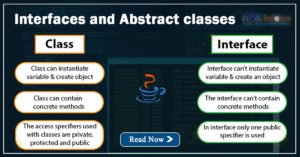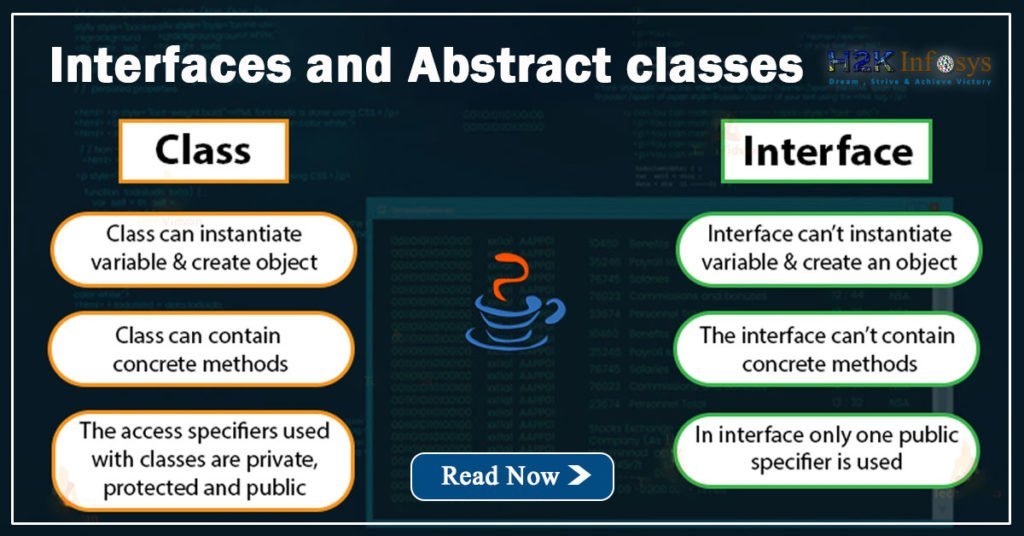What are the Junit Testing advantages?
Due to simple nature the Junit, it will be the first option when testing with java application. It is separately integrated with Ant and Maven tools and other tools like Dbunit database testing unit, XML testing which simplifies XML testing.
During the process of Junit testing applications, the developers may face many problems like, the flow of applications cannot be tested only by main method. For example, if we want a web application, if we want to test the flow we need to deploy it on the server and change the java code. The testing time will increase. The user will be not sure if this kind of test is passed or not. Junit can solve all these issues of testing as, it is only used to test the actual class. Using Junit can save time. Using system.out.println will output the message which will not assure that the result will be collected in structured way.
Junit test cases can be implemented in DAO classes. Junit can be employed to test the series of program code singularly or multiple units.java testing is the first which developed the idea of testing and coding which assured the setting up of data defining the expected output. Junit can identify the bugs, sometimes the bugs can be introduced when new features are added or when the existing code is changed. This shows the regression. The Junit provides the text based command lines and AWT and swing based graphical test reporting. Junit is widely accepted by organization around the world for performing unit test in java programming. Junit programming test became the standard for testing in java programming language. The annotations of JUnit testing, that can be used while writing the test cases in Junit framework are
@Test: the test annotation specifies the test method.
@Test(timeout=1000) this type of annotations specifies that the method will be failed if it takes more than 1000 milliseconds.
@BeforeClass: this annotation specifies that the method will be invoked only once before all tests starts.
Before: this method invokes at the very beginning of the each test.
@After: this annotation invokes this method invokes after each test.
@After class annotation specifies that the method will invoke only once at the end of all test.
The org.Junit package contains many interfaces and classes like Assert, Test, before
After for Junit testing.
Questions:
1. What are the features of Junit testing?


























37 Responses
1. What are the features of Junit testing?
Features of Junit testing:
a. Fixtures -complete fixed state of set of objects used as a baseline for running tests; used to ensure that there is a well known fixed environment to check if results are repeatable.
b. Text suites – groups of a few test cases run together.
c. Test Runners – used for executing test cases.
d. Junit classes – different classes of Junit utilized:
–Assert: contains a group of assert methods.
–Test case: defines the fixture to perform multiple tests.
–Test Result: contains the method which collects the test result of executing test case.
More features/advantages of Junit:
-Provides a tool for execution of test cases.
-Finds bugs early in the code and makes the code reliable.
-Useful for developers who are in test-driven environment.
-Forces the programmer to read code more than just writing it.
-Provides text based command lines and AWT and swing based graphical test reporting.
-Widely accepted by organization around the world for performing unit test in java programming.
-The standard for testing in java programming language.
Features of JUnit
JUnit is an open source framework, which is used for writing and running tests.
Provides annotations to identify test methods.
Provides assertions for testing expected results.
Provides test runners for running tests.
JUnit tests allow you to write codes faster, which increases quality.
Features of Junit testing are:
1.Fixtures – Fixture is a complete fixed state of set of objects used as a baseline for running tests. The main purpose of test fixtures, is to ensure that there is a well known fixed environment in which we check if the results are repeatable.
2.Text suits – A test suite groups a few test cases and runs them together. The both @Runwith and @suite annotation in Junit are used to run the suite test.
3.Test Runners – It is simply used for executing test cases.
4.Junit classes – The Junit provides tool for execution of test cases. Junit core classes are used to run these test cases. A method called runclasses is used, which provides org.Junit.runner.Junitcore is used to run the several test classes. The return type of this method is the Result object (org.Junit.runner.Result) which access information about tests.
The important features of Junit testing are:
*Fixtures-The main purpose of test fixtures, is to ensure that there is a well known fixed environment in which we check if the results are repeatable.
*Text suits-A text suite groups a few test cases and runs them together. The both @Runwith and @suite annotation in Junit are used to run the suite test.
*Test Runners-It is simply used for executing test cases.
*Junit classes-There are some important classes of Junit
1)Assert: it contains a group of assert methods.
2)Test case: it may contain a test case which will define the fixture to perform multiple tests.
3)Test Result: it contains the method which collects the test result of executing test case.The Junit provides tool for execution of test cases.
The features of Junit testing are
1. Fixtures: It is a context where test runs and the results are repeatable
2. Test suites: It bundles few test cases and runs them together
3. Test Runners: It is used for executing test cases
4. Junit classes: It is used in writing and testing JUnits
Advantages of Junit testing:
JUnit is a testing framework that developers use for writing test cases while developing the software.
This procedure increases productivity and stability of program code and reduce the time for debugging. JUnit can catch bugs better than the programmers. Unit testing can prove to be useful.
1. Fixtures: It is a context where test runs and the results are repeatable
2. Test suites: It bundles few test cases and runs them together
3. Test Runners: It is used for executing test cases
4. Junit classes: It is used in wrirting and testing JUnits
The important features of Junit testing are
1. Fixtures: It is a context where test runs and the results are repeatable
2. Test suites: It bundles few test cases and runs them together
3. Test Runners: It is used for executing test cases
4. Junit classes: It is used in wrirting and testing JUnits
simple nature the Junit, it will be the first option when testing with java application. It is separately integrated with Ant and Maven tools and other tools like Dbunit database testing unit, XML testing which simplifies XML testing.
Features:
Junit test cases can be implemented in DAO classes. Junit can be employed to test the series of program code singularly or multiple units.
Junit can identify the bugs, sometimes the bugs can be introduced when new features are added or when the existing code is changed. This shows the regression.
The Junit provides the text based command lines and AWT and swing based graphical test reporting.
Junit is widely accepted by organization around the world for performing unit test in java programming.
Junit programming test became the standard for testing in java programming language. The annotations of JUnit testing, that can be used while writing the test cases in Junit framework are
JUNIT TESTING
unit testing is a type of unit testing which is implemented in java to accelerate the programming speed and increase the quality of code. This application is integrated with eclipse, Ant, Maven. The important features of Junit testing are:
1. Fixtures
2. Text suits
3. Test Runners
4. Junit classes
More features/advantages of Junit:
-Provides a tool for execution of test cases.
-Finds bugs early in the code and makes the code reliable.
-Useful for developers who are in test-driven environment.
-Forces the programmer to read code more than just writing it.
-Provides text based command lines and AWT and swing based graphical test reporting.
-Widely accepted by organization around the world for performing unit test in java programming.
-The standard for testing in java programming language.
. What are the features of Junit testing?
Fixtures:
Fixture is a complete fixed state of set of objects used as a baseline for running tests. The main purpose of test fixtures, is to ensure that there is a well known fixed environment in which we check if the results are repeatable. It has two methods
A setup () method which runs before the test invocation.
A teardown () method which runs after the test method.
Test Suites:
A test suite groups a few test cases and runs them together. The both @Runwith and @suite annotation in Junit are used to run the suite test.
Test Runners:
It is simply used for executing test cases.
Junit classes:
There are some important classes of Junit
Assert: it contains a group of assert methods.
Test case: it may contain a test case which will define the fixture to perform multiple tests.
Test Result: it contains the method which collects the test result of executing test case.
Junit testing features:
• Fixtures
• Test suites: groups a few test cases and runs them together.
• Test runners: used for executing test cases.
• Junit classes: Assert, test case, test result
2. feature of jmeter testing
Fixtures
Text suits
Test Runners
Junit classes
The features of Junit testing ; junit testing is an open source of frame, which is used for
writing and running tests
_ provides annotations to identify test methods.
_ provides assertions for expected results.
_ provides test runners for running tests.
_ allow you to write codes faster, which increases quality.
_ junit tests can be run Automatically and they check their own
results.
Junit shows test progress in a bar that is green if the test is
running smoothly, and it turns red when a test fails.
JUnit testing is a type of unit testing which is implemented in java to accelerate the programming speed and increase the quality of code. This application is integrated with eclipse, Ant, Maven. The important features of JUnit testing are:
Fixtures:
Fixture is a complete fixed state of set of objects used as a baseline for running tests. The main purpose of test fixtures, is to ensure that there is a well known fixed environment in which we check if the results are repeatable. It has two methods
A setup () method which runs before the test invocation.
A teardown () method which runs after the test method.
Test Suites:
A test suite groups a few test cases and runs them together. The both @Runwith and @suite annotation in Junit are used to run the suite test.
Test Runners:
It is simply used for executing test cases.
Junit classes:
There are some important classes of Junit
Assert: it contains a group of assert methods.
Test case: it may contain a test case which will define the fixture to perform multiple tests.
Test Result: it contains the method which collects the test result of executing test case.
The important features of Junit testing are:
Fixtures
Text suits
Test Runners
Junit classes
Unit is an open source framework, which is used for writing and running tests.
Provides annotations to identify test methods, assertions for testing expected results and test runners for running tests.
JUnit tests allow you to write codes faster, which increases quality.
JUnit is elegantly simple. It is less complex and takes less time.
Features of Junit testing are:
1.Fixtures – Fixture is a complete fixed state of set of objects used as a baseline for running tests. The main purpose of test fixtures, is to ensure that there is a well known fixed environment in which we check if the results are repeatable.
2.Text suits – A test suite groups a few test cases and runs them together. The both @Runwith and @suite annotation in Junit are used to run the suite test.
3.Test Runners – It is simply used for executing test cases.
4.Junit classes – The Junit provides tool for execution of test cases. Junit core classes are used to run these test cases. A method called runclasses is used, which provides org.Junit.runner.Junitcore is used to run the several test classes. The return type of this method is the Result object (org.Junit.runner.Result) which access information about tests.
What are the features of Junit testing?
Fixtures:
Fixture is a complete fixed state of set of objects used as a baseline for running tests. The main purpose of test fixtures, is to ensure that there is a well known fixed environment in which we check if the results are repeatable. It has two methods
A setup () method which runs before the test invocation.
A teardown () method which runs after the test method.
Test Suites:
A test suite groups a few test cases and runs them together. The both @Runwith and @suite annotation in Junit are used to run the suite test.
Test Runners:
It is simply used for executing test cases.
Junit classes:
There are some important classes of Junit
Assert: it contains a group of assert methods.
Test case: it may contain a test case which will define the fixture to perform multiple tests.
Test Result: it contains the method which collects the test result of executing test case.
Fixtures: Fixture is a complete fixed state of set of objects used as a baseline for running tests.
Text suits:A test suite groups a few test cases and runs them together.
Test Runners:It is simply used for executing test cases.
Junit classes: The important classes are
Assert: it contains a group of assert methods.
Test case: it may contain a test case which will define the fixture to perform multiple tests.
Test Result: it contains the method which collects the test result of executing test case.
The features of Junit testing are 1.Fixtures 2.Text Suits 3.Test Runners 4.Junnit classes
1.The important features of Junit testing are:
Fixtures
Text suits
Test Runners
Junit classes
1. The important features of Junit testing are fixtures, text suits, test Runners, and Junit classes. Fixture is a complete fixed state of set of objects used as a baseline for running tests. A test suite groups a few test cases and runs them together. Test Runners are simply used for executing test cases. The Junit provides tool for execution of test cases. Junit core classes are used to run these test cases.
Features of Junit are:
1. Fixtures : They are set of objects that form a baseline for running the tests.
2. Test Suites – They group few test cases and run them together. The @Runwith and @Suite annotations of Junit are used to run the suite tests.
3. Test Runners – They are used in executing the test cases.
4.Junit Classes – Are classes that are used in writing and testing Junit. Some important classes are Assert, Test Case and Test Result.
What are the features of Junit testing?
Fixtures
Text suits
Test Runners
Junit classes
What are the features of Junit testing?
* The important features of Junit testing are:
1. Fixtures
2. Text suits
3. Test Runners
4. Junit classes
2. Fixture
Test Suits
Test Runners
Junit Classes
What are the features of Junit testing?
Fixtures, text suits, test runners, Junit classes
1. the features of junit testing are : fixtures, test suits, test runners, and junit classes
1. What are the features of Junit testing?
The important features of Junit testing are:
Fixtures
Text suits
Test Runners
Junit classes
Fixtures:
Fixture is a complete fixed state of set of objects used as a baseline for running tests. The main purpose of test fixtures, is to ensure that there is a well known fixed environment in which we check if the results are repeatable. It has two methods
A setup () method which runs before the test invocation.
A teardown () method which runs after the test method.
Test Suites:
A test suite groups a few test cases and runs them together. The both @Runwith and @suite annotation in Junit are used to run the suite test.
Test Runners:
It is simply used for executing test cases.
Junit classes:
There are some important classes of Junit
Assert: it contains a group of assert methods.
Test case: it may contain a test case which will define the fixture to perform multiple tests.
Test Result: it contains the method which collects the test result of executing test case.
The Junit provides tool for execution of test cases. Junit core classes are used to run these test cases. A method called runclasses is used, which provides org.Junit.runner.Junitcore is used to run the several test classes. The return type of this method is the Result object (org.Junit.runner.Result) which access information about tests.
. What are the features of Junit testing?
The features of Junit testing are:
1. Fixtures
2. Text suits
3. Test Runners and
4. Junit classes
What are the features of Junit Testing?
Answer: The important features of Junit testing are:
1. Fixtures
2. Test suits
3. Test runners
4 .Junit classes
The important features of Junit testing are:
Fixtures
Text suits
Test Runners
Junit classes
Fixtures:
Fixture is a complete fixed state of set of objects used as a baseline for running tests. The main purpose of test fixtures, is to ensure that there is a well known fixed environment in which we check if the results are repeatable. It has two methods
A setup () method which runs before the test invocation.
A teardown () method which runs after the test method.
Test Suites:
A test suite groups a few test cases and runs them together. The both @Runwith and @suite annotation in Junit are used to run the suite test.
Test Runners:
It is simply used for executing test cases.
Junit classes:
There are some important classes of Junit
Assert: it contains a group of assert methods.
Test case: it may contain a test case which will define the fixture to perform multiple tests.
Test Result: it contains the method which collects the test result of executing test case.
1. What are the features of Junit testing?
The important features of Junit testing are:
Fixtures
Text suits
Test Runners
Junit classes
1. What are the features of Junit testing?
The features of Junit testing are
*Fixtures: The main purpose of test fixtures, is to ensure that there is a well known fixed environment in which we check if
the results are repeatable.
*Test Suites: It groups a few test cases and runs them together.
*Test Runners: It is simply used for excuting test cases.
*Junit classes: It provides tool for execution of tests cases.
Hi,
Thank you for providing this data.